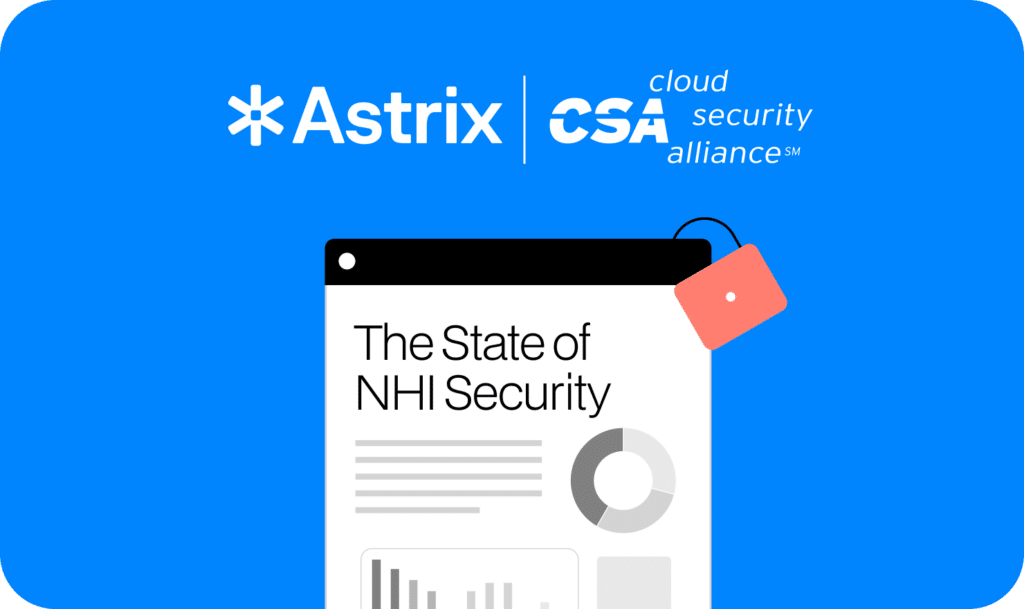10 Predictions for Non-Human Identity Security in 2025

Non-human identities are emerging as a critical focus for organizations worldwide. Based on current trends, expertise, and experience in the market, our security experts, Tal Skverer, Tomer Yahalom, and Timothy Youngblood, have outlined ten key predictions for 2025.
Prediction 1: Recognition by auditors and regulators that NHIs will be important for compliance
Why we predict it:
The latest PCI DSS 4.0 guidelines already incorporate stronger controls around authentication and access management, including requirements that could extend to NHIs. The Cloud Security Alliance’s 2024 State of Non-Human Identity Security report reveals that 68% of organizations feel their NHIs are under-monitored, signaling a compliance gap. External auditors, especially in highly regulated industries, are increasingly questioning organizations about their NHI controls, a trend driven by breaches involving unmanaged NHIs.
Prediction 2: Threat actors will increasingly exploit NHIs as cloud adoption grows
Why we predict it:
The rapid adoption of cloud platforms introduces more credentials, misconfigurations, and technologies that attackers can exploit. According to the CSA report, 1 in 5 organizations saw security incidents involving NHIs last year. This aligns with the growing attack surface presented by misconfigured API keys, service accounts, and automation scripts.
Prediction 3: Increased investment in NHI-focused tools
Why we predict it:
Organizations are realizing that stringing together legacy tools like PAM and IGA fails to provide comprehensive NHI security. The CSA report notes that 56% of organizations find their current identity management tools insufficient for NHIs, driving the need for purpose-built solutions.
Prediction 4: Proliferation of NHI-focused solutions and acquisitions
Why we predict it:
As NHI security becomes a necessity, new players are entering the market with preventive solutions. Established identity providers like Okta and CyberArk are also expected to add NHI capabilities to remain competitive. Major acquisitions in this space will likely shape the market landscape.
Prediction 5: SaaS and cloud providers will phase out legacy NHIs
Why we predict it:
Just as app-specific passwords (ASPs) were deprecated due to their security limitations, legacy NHIs like static API keys are on track to be replaced by more secure, ephemeral solutions. Major cloud providers like AWS, Microsoft, and Google are likely to drive this transition.
Prediction 6: AI agents will exacerbate NHI security challenges
Why we predict it:
AI-driven automation will introduce an unprecedented number of machine-to-machine interactions, each requiring credentials. This explosion of NHIs will strain current identity management solutions, increasing the risk of security incidents.
Prediction 7: Limited adoption of passwordless solutions
Why we predict it:
Despite being a touted best practice, passwordless authentication faces significant adoption barriers. Setting up the necessary infrastructure, such as FIDO2 keys, biometrics, and integration across systems, is complex and costly. This leaves most organizations reliant on traditional credentials for NHIs.
Prediction 8: Filling gaps in NHI activity logging
Why we predict it:
Organizations are increasingly prioritizing the visibility of NHI actions for compliance and forensic purposes. However, many logging systems fail to capture granular details about NHI activities, leaving critical gaps. Compliance mandates like PCI DSS and SOC 2 are pushing organizations to address this issue.
Prediction 9: Shift from ITDR to ITPR with a focus on prevention
Why we predict it:
Identity Threat Detection and Response (ITDR) solutions are evolving towards Identity Threat Prevention and Response (ITPR) to address the root causes of NHI-based attacks. This mirrors the broader cybersecurity trend of emphasizing prevention over detection.
Prediction 10: NHIs will become integral to zero-trust frameworks
Why we predict it:
Zero trust is increasingly seen as a framework rather than a checklist, and securing NHIs will be a critical component. Organizations are beginning to include NHIs in their zero-trust strategies, ensuring that machine identities are treated with the same rigor as human ones.
Our experts and I will have to wait and see which ones come true, and more importantly – to what extent. We shall all stay tuned 🙂




























